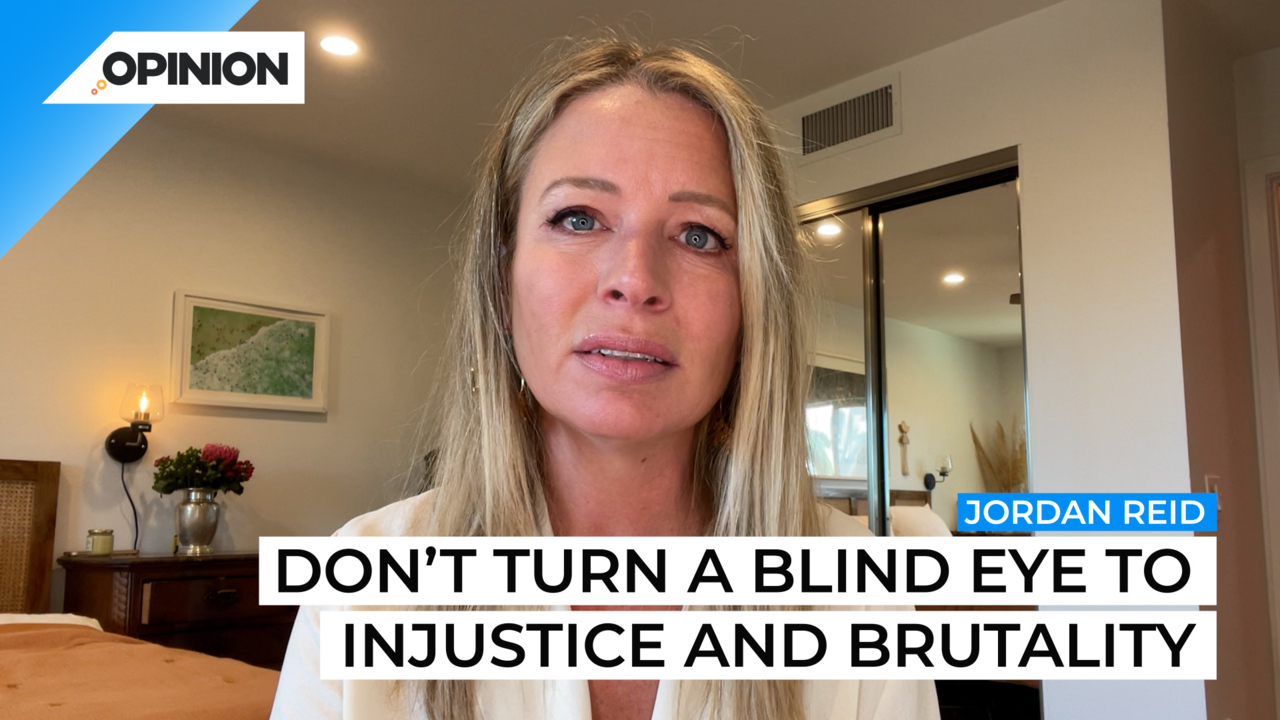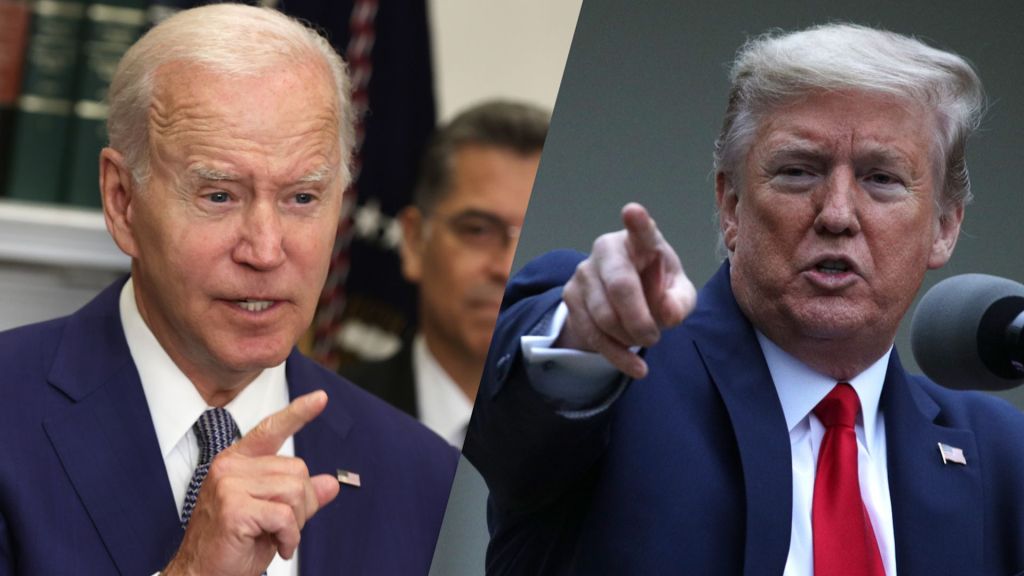
Commentary
-
Our commentary partners will help you reach your own conclusions on complex topics.
On September 11 2001, I was in college, and I woke up way before I had class because I had this dream where I died in a fiery explosion, and ended up sitting on a hilltop looking down at the burning wreckage below. And it was very jarring and made me believe in collective energy.
Anyway, I was awake when my father called me from New York to tell me that a plane had hit one of the towers. And then I was on the phone with my mom, also in New York when the first tower fell. And I’m watching this mushroom cloud of debris go out over Lower Manhattan, and I’m screaming at her to run, run out of town.
And she’s fine. My parents are fine. No one I know personally, was killed in the attacks. But my life changed that day, forever. I still can’t look at the images of the towers falling without this very visceral trauma response. And that makes sense. Of course it does. It was my first experience of collective trauma. And I had never experienced anything like it before. None of us had.
Except I’m used to this feeling now. It’s not a once every 20 years event, it’s weekly. And it still stops me in my tracks, but less so. The list of collective traumas we’ve experienced is long, updated with no longer startling frequency as images that were once resigned to the depths of our nightmares come alive in real time.
You know, we’re all sitting alone in our houses in our little work from home office setups and we’re holding our breath as we watch these previously unfathomable events unspool. And, and we’re, you know, we’re wishing we could hold the children that are crying or wishing we could rush to the scene and bandage the wounded, but we can’t.
And so we share the post. And we hope that that helps. After the 2016 events in Nice, France, when a terrorist drove a 19-ton truck into a Bastille Day crowd killing 86 people and injuring over 400, hundreds, I did this incredibly strange thing. It’s embarrassing. I went online, and I watched all these YouTube videos taken by people who were there before they were removed from the platform for being too graphic. It was awful. I will never get those images out of my head ever.
So why did I do that? What amounts to online rubbernecking? I’ve thought about this and I think that I I felt that somehow seeing this unsanitized unfiltered reality as horrifying as it was if I saw it I was protected. I guess I thought if I looked at the monster under the bed, it wouldn’t be as frightening.
But it was. The images of the falling towers, they live in my head. They make my heart pound, my throat tighten and they have company now. They have so much company. When I wake up in the morning I brace myself physically before I check the news, because I know that the chances of learning that another horror has unfolded while I was sleeping. High.
I did watch the video of Tyree Nichols. But I turned it off when he called out for his mother. My heart could not take it. Documenting human rights violations, documenting for the public the brutality that so many don’t have the privilege of turning a blind eye to, it is beyond necessary. It is essential. But I do think that for the sake of our individual and collective mental health there, there has to come a point where we recognize that our bodies and our minds, they are, they’re just not built for this.
And estimated 95 million photos and videos are uploaded to Instagram alone every day. That’s more than 1000 a second. We no longer receive our news and discreet you know bite size. End of the day moments we receive it as it’s happening with all the associated alarm bell ringing.
And we all know that the media profits off our attention. And what’s the best way to get attention? Make people scared. What I’m saying is not that we should turn a blind eye to injustice or brutality.
Of course not. I’m saying that as individuals, we have to weigh the importance of documentation and of knowledge and of understanding against the trauma of repeated exposure. Studies following terrorist events from September 11, to the Boston Marathon bombing have shown that children exposed to repeated media coverage of these events develop acute stress reactions and PTSD, even without personal knowledge of any victims.
It’s not just children that this is happening to. Our brains and yes, particularly this still developing brains of of our children are not set up for this constant onslaught of violent imagery. And we were absolutely suffering the consequences when it comes to our mental health. I feel it every day. I’m sure you do, too. I obviously think about this stuff a lot even more so now that my children are of the age where they have their own devices.
I wonder how to compartmentalize consumption so that this triggering content is viewed under the right circumstances in the right context. There is a time and a place for watching the video of Tyre Nichols crying out for his mother. And over your morning coffee, it’s just that’s not it.
So be activated, be aware of, be angry, but take care of yourself too.
-
Why I doubt Trump will be convicted in hush money case
Donald Trump is the first former president to face trial on criminal charges. In the first of potentially four trials, Trump entered a plea of not guilty to 34 counts of falsifying business records. These charges stem from a $130,000 payment made to the adult actress and stripper Stormy Daniels, which aimed to keep her…
-
Political comedy has a role to play in Gaza
Political comedians in the U.S. have sometimes struggled to cover the war in Gaza, which has been defined by tremendous human suffering and high political polarization, none of which seems particularly funny. Comedian Ramy Youssef attempted to tackle some of those issues in an opening monologue of a recent “Saturday Night Live” (SNL) episode. Straight…
-
Republicans don’t care about female voters
Women make up the largest demographic among registered voters in America and consistently participate in elections, with over 68% turning out to vote in the 2020 presidential election. Some political analysts suggest that with the recent reversal of Roe v. Wade, abortion has become a key issue among voters, benefiting Democratic candidates. However, in the…
-
Birth control disinformation confuses young women on social media
A new social media trend may be responsible for spreading online disinformation about women’s birth control. Influencers and content creators have been publishing content that critics say is not only wrong but also potentially dangerous for young women and girls. Straight Arrow News contributor Jordan Reid confronts that disinformation and tries to clarify the pros…
-
A grim reminder of some of Trump’s most disturbing statements
While mobilizing support for U.S. Senate candidate Bernie Moreno in Ohio, presumptive Republican presidential nominee Donald Trump warned of dire consequences if he —Trump — were to lose the election. This wasn’t the first instance where the former president delivered a rally speech to threaten violence or warn of a doomsday scenario should Biden secure…
Latest Opinions
-
 Getty Images
Getty Images
More Dems signal willingness to save Johnson from speakership vote
-
 Getty Images
Getty Images
NASA worm returns as interest in space grows around the world
-
 Reuters
Reuters
SF DA seeks restitution for drivers delayed by Golden Gate Bridge protest
-
 Getty Images
Getty Images
Mexico disrupts China’s potential plan to infiltrate US EV market
-
 Getty Images
Getty Images
Free speech fight after USC cancels valedictorian’s speech
Popular Opinions
-
In addition to the facts, we believe it’s vital to hear perspectives from all sides of the political spectrum.


